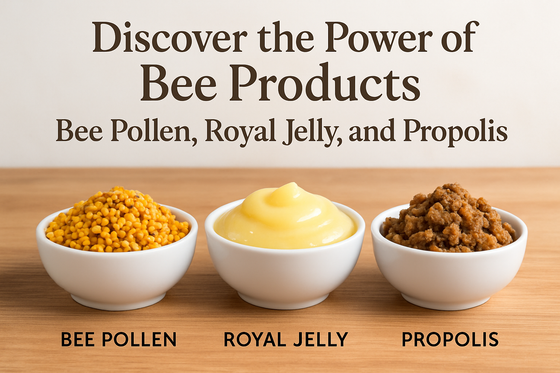
1. Heat oven to 350 degrees. Butter and flour a 10-inch bundt pan.
2. Whisk together the flour, baking powder, salt, cinnamon and ginger in a medium bowl; set aside.
3. Whisk together the granulated sugar, honey, oil, tea, eggs, vanilla and lemon juice and zest in the bowl of a stand mixer.
4. With the mixer on low, add the flour mixture and stir, scraping down the sides, until the batter is smooth and slightly runny.
5. Transfer the batter in the pan and bake, rotating once, until golden brown and a toothpick inserted in the center comes out clean, 50 minutes to 1 hour. Let cool in the pan 15 minutes. Invert onto a wire rack to cool completely. Dust with confectioners’ sugar, and serve.
📸: Simple Nourished Living
Comments will be approved before showing up.

Propolis is a resinous mixture produced by honey bees when they collect sap from trees and mix it with beeswax and enzymes. The result: nature’s own protective compound, used by bees to seal their hive and guard against bacteria, fungi, and weather.
Because of its rich composition of polyphenols, flavonoids, and antimicrobial compounds, propolis is now valued as a “bee-made immunity booster” and “ wellness ally.” PMC+2PMC+2

Let’s get real about honey bees for a second: These little guys are basically the world’s MVPs. You think they buzz around making honey for your toast? Bees: The Real Foodies’ Wingmen, Here’s the serious bit: When bees start dropping off, it’s a big red flag for the environment. They’re like those canaries in the coal mine—if they’re not okay, odds are, we’re messing something up (pesticides, climate, you know the drill). Saving the bees isn’t just about saving honey; it’s about keeping our own butts.

Bee Pollen vs. Royal Jelly vs. Propolis: There are numerous bee products available, so let’s take a moment to examine the differences between bee pollen, royal jelly, and propolis.
Bee products have been revered for thousands of years, trans-culturally, for nourishment, healing, and well-being. Today, they are being rediscovered as natural superfoods. Three of the most popular treasures of the hive are bee pollen, royal jelly, and propolis. They’re often combined, but each is also quite distinct in its origins, components and health benefits. Appreciating these differences can help you make the most of what nature’s hardest workers offer.